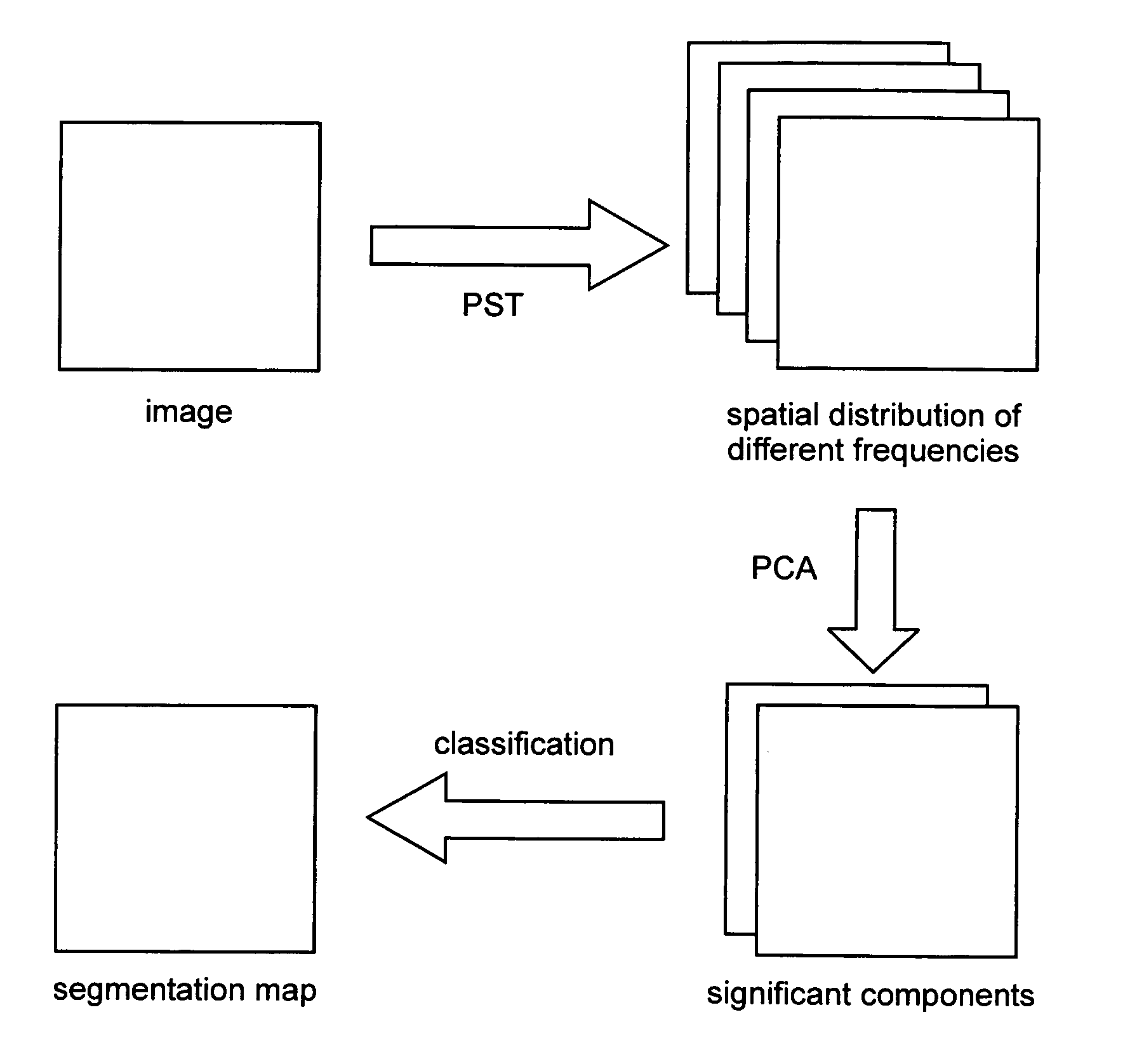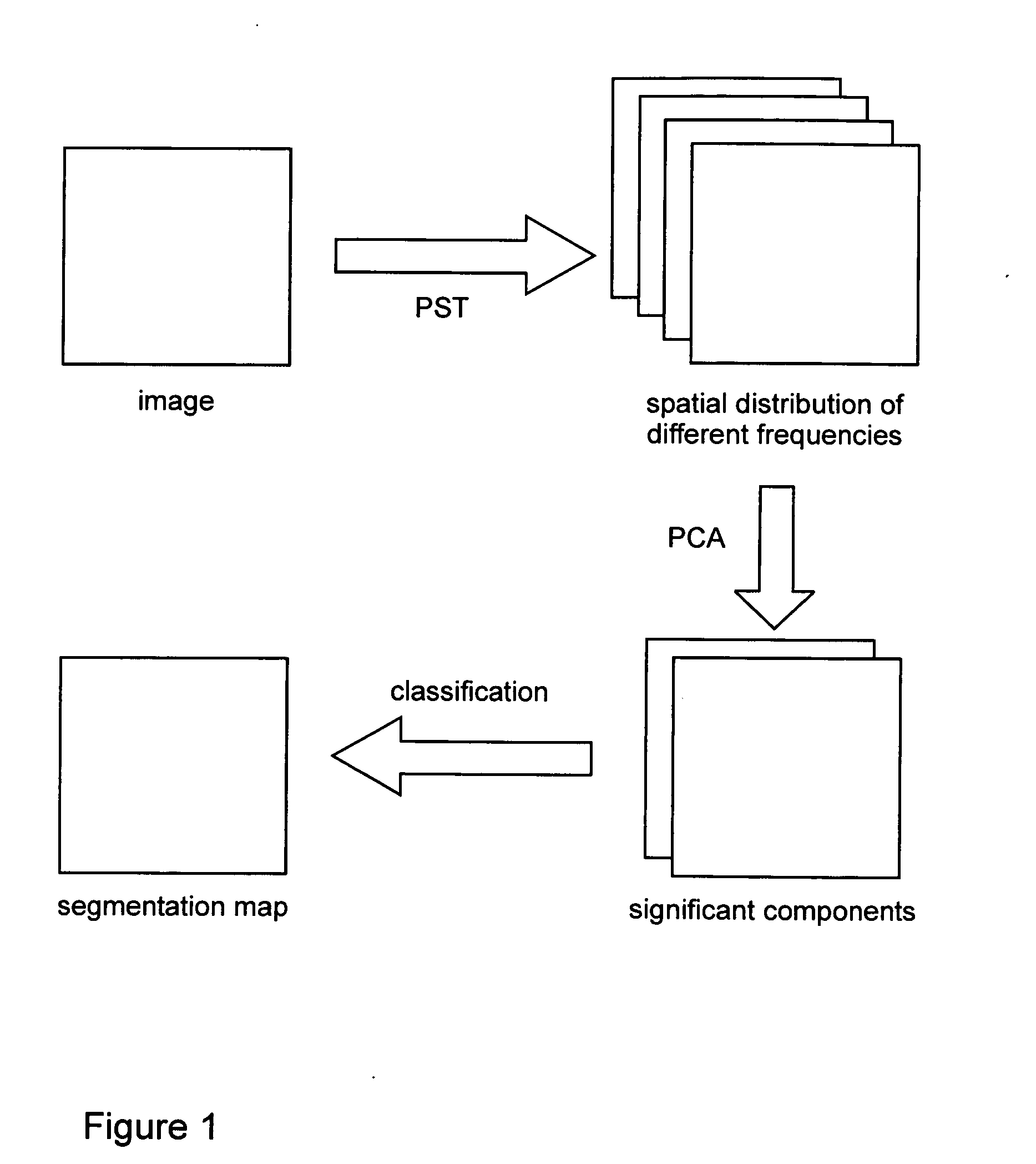Image texture segmentation using polar S-transform and principal component analysis
a polar s-transform and image texture technology, applied in image enhancement, instruments, recognition of medical/anatomical patterns, etc., can solve the problems of large amount of redundancy in this representation, difficult to detect microscopic abnormalities in tissues, and st is not rotation-invariant, so as to reduce redundancy and maximum data variation
- Summary
- Abstract
- Description
- Claims
- Application Information
AI Technical Summary
Benefits of technology
Problems solved by technology
Method used
Image
Examples
Embodiment Construction
[0039] In the following, the description of the method and system for image texture segmentation according to the invention is limited to the processing of 2D MRI image data for the sake of simplicity and clarity. However, it will become apparent to those in the art that the method and system for image texture segmentation is not limited thereto but is expandable for texture segmentation of data in more than two dimensions in a straightforward manner. Furthermore, the texture segmentation based on the method and system according to the invention is also applicable in numerous other applications such as, for example, analyzing data in geophysical applications.
[0040] The 2D ST provides multi-resolution local frequency content by Fourier transforming an image localized by frequency-dependent Gaussian windows. The Gaussian localizing windows are chosen such that relative optimal resolutions in both time and frequency are achieved. The Stockwell spectrum of a 2D image is relatively easy...
PUM
 Login to View More
Login to View More Abstract
Description
Claims
Application Information
 Login to View More
Login to View More - R&D
- Intellectual Property
- Life Sciences
- Materials
- Tech Scout
- Unparalleled Data Quality
- Higher Quality Content
- 60% Fewer Hallucinations
Browse by: Latest US Patents, China's latest patents, Technical Efficacy Thesaurus, Application Domain, Technology Topic, Popular Technical Reports.
© 2025 PatSnap. All rights reserved.Legal|Privacy policy|Modern Slavery Act Transparency Statement|Sitemap|About US| Contact US: help@patsnap.com



